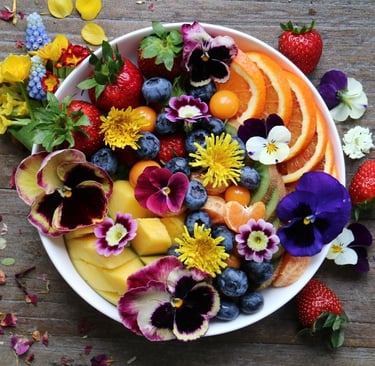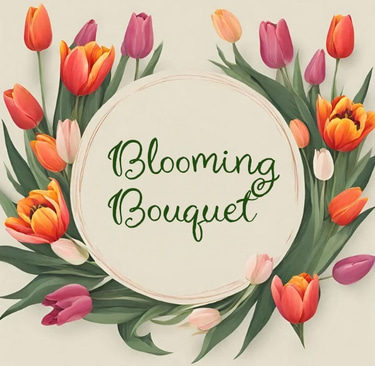Exploring the Relationship Between Flowers and Food
Discover the enchanting fusion of flowers and food in our blog post. Explore the historical significance, modern trends, and nutritional benefits of incorporating edible flowers into your culinary creations. Get inspired to infuse your dishes with the delicate flavors and vibrant colors of nature's blooms.
PARTYFOOD AND FLOWERSFLOWERS


Exploring the Relationship Between Flowers and Food
When it comes to the world of culinary delights, we often focus on the taste, aroma, and presentation of the dishes. But have you ever considered the role that flowers play in the world of food? Yes, that's right - flowers! These beautiful blooms not only add a touch of elegance to our gardens and homes but can also be used to enhance our culinary creations. In this blog post, we will explore the relationship between flowers and food, discover which flowers are associated with particular types of cuisine, and delve into the fascinating world of flower-to-food pairings.
Flowers in Cuisine: A Brief History
Using flowers in cooking is not a new concept. In fact, it dates back thousands of years to ancient civilizations such as the Romans, Greeks, and Chinese. These cultures recognized the aesthetic and aromatic qualities of flowers and began incorporating them into their culinary traditions.
During the Renaissance period, the use of flowers in cooking became more widespread in Europe. Edible flowers were not only used to garnish dishes but were also included as ingredients in various recipes. However, the practice of using flowers in cooking declined over the centuries, only to experience a resurgence in recent years.
Flowers Associated with Food
Now, let's take a closer look at some flowers that are commonly associated with particular types of food:
Rose
The rose, often referred to as the "queen of flowers," is not only admired for its beauty and fragrance but is also a versatile culinary ingredient. Rose petals can be used to infuse flavor into desserts, teas, and even savory dishes. In Middle Eastern cuisine, rose water is a popular ingredient in sweets like Turkish delight and baklava.
Lavender
Lavender is known for its calming scent, but it also adds a unique flavor to both sweet and savory dishes. The delicate purple flowers can be used to infuse desserts, such as lavender-infused shortbread cookies or lavender-flavored ice cream. In savory dishes, lavender pairs well with meats like lamb or can be used to add a floral twist to salad dressings.
Nasturtium
Nasturtium flowers are not only vibrant and beautiful but also offer a peppery flavor that adds a punch to salads and other dishes. The bright orange and yellow blossoms can be used as a garnish or incorporated into salads for a pop of color and a slightly spicy taste.
Chrysanthemum
In Chinese cuisine, chrysanthemum flowers are often used to make tea. The petals of the flower are dried and brewed to create a fragrant and soothing beverage. Chrysanthemum tea is believed to have various health benefits, including reducing inflammation and improving digestion.
Flower-to-Food Pairings
Now that we have explored some flowers commonly associated with food, let's dive into the exciting world of flower-to-food pairings. Just like wine and cheese or chocolate and strawberries, certain flowers can complement specific ingredients and create a harmonious flavor profile. Here are a few flower-to-food pairings to inspire your culinary adventures:
Marigold and Corn
The vibrant orange marigold flowers and sweet corn are a match made in culinary heaven. The marigold's slightly citrusy and spicy flavor complements the sweetness of the corn, adding a burst of color and taste to dishes like salads or salsas.
Pansy and Goat Cheese
The delicate and colorful pansy flowers pair beautifully with creamy goat cheese. The mild, slightly grassy flavor of the pansy enhances the tanginess of the cheese, creating a delightful combination. Use pansies as a garnish on a goat cheese tart or incorporate them into a spring salad.
Violet and Chocolate
Violets, with their deep purple hue and delicate flavor, are a natural match for rich, dark chocolate. The floral notes of the violet complement the sweetness and bitterness of the chocolate, creating a sophisticated and indulgent treat. Try decorating your chocolate desserts with violet petals for an elegant touch.
Conclusion
Flowers and food may seem like an unlikely combination, but they have a long-standing relationship that dates back centuries. From ancient civilizations to modern-day culinary creations, flowers have been used to enhance the aesthetic appeal, aroma, and flavor of various dishes. Whether you're infusing rose petals into a dessert or experimenting with flower-to-food pairings, incorporating flowers into your cooking can add a touch of elegance and creativity. So, why not embrace the beauty of flowers and explore the endless possibilities they offer in the world of food?
